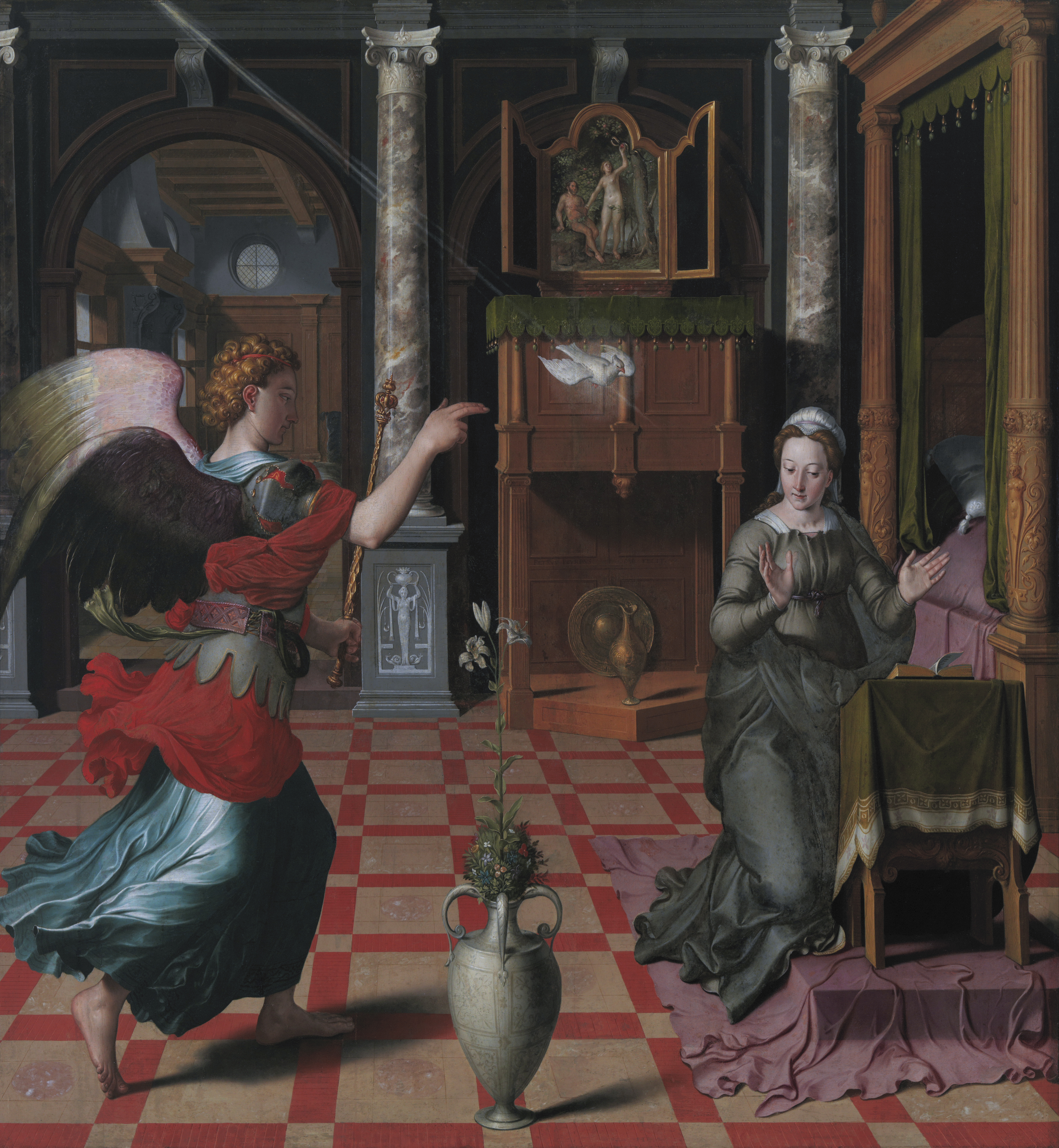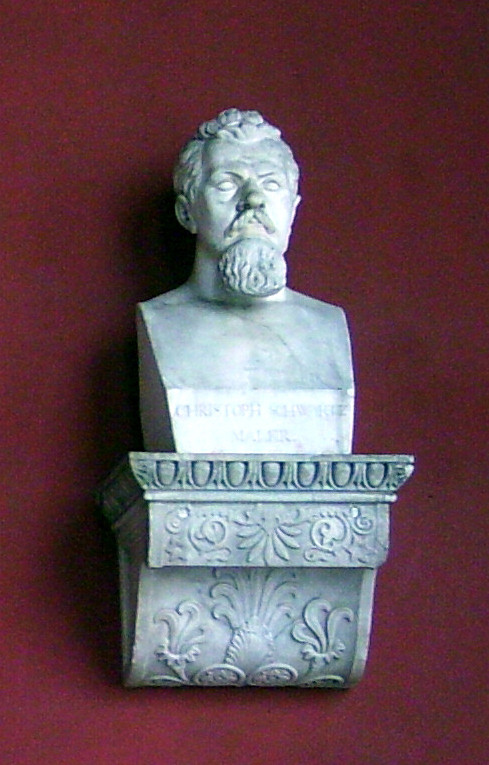|
Roger De Piles' Artists From Germany And The Low Countries
Roger de Piles's ''L'Abrégé de la vie des peintres...avec un traité du peintre parfait'' (''The Art of Painting and the Lives of the Painters'') was a major art biography of painters. It was written by the French spy Roger de Piles. In 1692, during the War of the League of Augsburg, he was arrested in the Hague carrying a false passport and imprisoned for the next five years, where he wrote his ''L'Abrégé'' in 7 parts; 1) Sketch of the perfect painter, 2) Greek painters; 3) Painters from Rome & Florence; 4) Painters from Venice; 5) Painters from Lombardy; 6) Painters from Germany and the Low Countries; 7) Painters from France and ending with his famous "Balance of painters". The book was finally published in 1699 following his appointment as Conseiller Honoraire to the Académie de peinture et de sculpture in Paris. Part 6 includes in order of appearance in the text, the following list of Artists from Germany and the Low Countries: *Hubert van Eyck (1366–1426), p 334 *Albrecht ... [...More Info...] [...Related Items...] OR: [Wikipedia] [Google] [Baidu] |
Roger De Piles
Roger de Piles (7 October 1635 – 5 April 1709) was a French painter, engraver, art critic and diplomat. Life Born in Clamecy, Roger de Piles studied philosophy and theology, and devoted himself to painting. In 1662 he became tutor to Michel Amelot de Gournay, whom he was to follow throughout his life, acting as secretary to his various missions as French ambassador to Venice, Portugal, Spain. In Venice (1682–1685) he started a famous collection of prints, drawings and paintings of Giorgione, Correggio, Rembrandt, Claude Lorrain, Rubens, Antoine Coypel, Jean-Baptiste Forest. He also acquired a taste for political intrigue using his travels ostensibly undertaken to study the European collections, as a buyer for Louis XIV, as cover for confidential missions - for example in Germany and Austria (1685) on behalf of Louis' minister, the marquis de Louvois. He was not always fortunate as a spy. In 1692, during the War of the League of Augsburg, he was arrested in the Hague ... [...More Info...] [...Related Items...] OR: [Wikipedia] [Google] [Baidu] |
Lambert Lombard
Lambert Lombard (c. 1505 – August 1566) was a Renaissance painter, architect and theorist for the Prince-Bishopric of Liège. During his career he worked for Jan Gossaert in Middelburg and trained Frans Floris. Biography Lombard was born in Liège, where in 1532 he became court painter and architect. A few paintings and many drawings have been preserved. In 1537, he was sent to Rome by Érard de La Marck, prince-bishop of Liège, to buy works of art, and he discovered the wonders of the Italian Renaissance. On his return he brought not only works of art, but also the new ideas concerning art and the position of the artist, to Liège. His pupils were Frans Floris, Hendrick Goltzius, Willem Key, Dominicus Lampsonius, , and .Lambert Lombard in the |
Maarten Van Heemskerck
Maarten van Heemskerck or ''Marten Jacobsz Heemskerk van Veen'' (1 June 1498 - 1 October 1574) was a Dutch portrait and religious painter, who spent most of his career in Haarlem. He was a pupil of Jan van Scorel, and adopted his teacher's Italian-influenced style. He spent the years 1532–6 in Italy. He produced many designs for engravers, and is especially known for his depictions of the Wonders of the World. Biography Early life Heemskerck was born in the village of Heemskerk, North Holland, halfway between Alkmaar and Haarlem. He was the son of a farmer called Jacob Willemsz. van Veen. According to his biography by Karel van Mander, he began his artistic training with the painter Cornelius Willemsz in Haarlem, but was recalled to Heemskerk by his father to work on the family farm. However, having contrived an argument with his father he left again, this time for Delft, where he studied under Jan Lucasz, before moving on to Haarlem, where he became a pupil of Jan van Scorel ... [...More Info...] [...Related Items...] OR: [Wikipedia] [Google] [Baidu] |
Hans Bol
Hans Bol or Jan Bol (16 December 1534 – 20 November 1593), was a Flemish-Belgian painter, print artist, miniaturist painter and draftsman.Hans Bol at the He is known for his , allegorical and biblical scenes, and s executed in a late |
Dirck Barendsz
Dirck Barendsz or Theodor Barendszoon (1534–1592) was a Dutch Renaissance painter from Amsterdam who traveled to Italy in his youth to learn from the Italian masters, most notably Titian. Biography He was trained by his father, a painter known as Dooven Barent, or ''deaf Barent'', [Baidu] |
Pieter Pourbus
Pieter Jansz. Pourbus (c. 1523–1584) was a Flemish Renaissance painter, draftsman, engineer and cartographer who was active in Bruges during the 16th century. He is known primarily for his religious and portrait paintings.Pieter Pourbus at the Life Birth and origin Pieter Pourbus was born in Gouda in 1523 or 1524. He moved to Bruges at the age of 20. Very little is known of his childhood and youth while living in Gouda; contemporary artists such as |
Hubert Goltzius
Hubert Goltz or Goltzius (30 October 1526 – 24 March 1583) was a Renaissance painter, engraver, and printer from the Southern Netherlands. He is not to be confused with the much more famous Hendrik Goltzius, who was his cousin, once removed. Life The early Flemish biographer Karel van Mander states in his ''Schilder-boeck'' (1604) that Goltzius was born in Venlo from parents who were originally from Wurzburg.Hubert Goltz in: Karel van Mander, ''Het Schilder-boeck'', 1604 He was a pupil of . He spent 12 years in Antwerp working on a book of engravings of antiquities, called "Medaglien oft tronien der Roomsche Keysers" (medallions or busts of Roman emperors). [...More Info...] [...Related Items...] OR: [Wikipedia] [Google] [Baidu] |
Willem Key
Willem Adriaensz Key (1516 – 5 June 1568) was a Flemish Renaissance painter. Biography Key was born in Breda, Netherlands. In 1529 he was known to be a pupil of Pieter Coecke van Aelst in Antwerp. Later, together with Frans Floris, he took lessons from Lambert Lombardus in Liège. He became a member of the Guild of St. Luke in Antwerp in 1540. He was a rich man who lived in a large house in the center of town near the exchange. He was married to Johanna Reyns, who after his death remarried to Maarten Peeters II, son of printer Maarten Peeters. Key's daughter Susanna married painter Huybrecht Beuckeleer. He became specialized in flattering portraits and made a good living from theatrically posed group portraits. In van Mander's biography, he mentions several larger pieces by his hand that were burned during the Beeldenstorm. In particular he mentions a destroyed group portrait of the market-sellers on an altar of the Onze-Lieve-Vrouwekathedraal in Antwerp. This could s ... [...More Info...] [...Related Items...] OR: [Wikipedia] [Google] [Baidu] |
Christoph Schwarz
Christoph Schwartz, Schwarz, or Schovarts (c. 1545 in München – April 15, 1592) was a German court painter. Biography Houbraken remarked that he died the same year that Adrian de Bie was born. He took his information from Joachim von Sandrart's ''Teutsche Akademie''. According to him, Schwartz was born in Ingolstadt and made many frescos and oil paintings while in the service of Maximilian I, Elector of Bavaria. According to the RKD, he died in 1592 and was the student of Johann Melchior Bocksberger, with whom he painted frescoes in Augsburg and Wasserburg am Inn Wasserburg am Inn (Central Bavarian: ''Wassabuag am Inn'') is a town in Rosenheim district in Upper Bavaria, Germany. The historic centre is a peninsula formed by the meandering river Inn. Many Medieval structures remain intact, giving the city a .... References {{DEFAULTSORT:Schwarz, Christoph 1592 deaths German Renaissance painters Artists from Munich Court painters Year of birth unknown Fresco pa ... [...More Info...] [...Related Items...] OR: [Wikipedia] [Google] [Baidu] |
Frans Floris
Frans Floris, Frans Floris the Elder or Frans Floris de Vriendt (17 April 15191 October 1570) was a Flemish painter, draughtsman, print artist and tapestry designer. He is mainly known for his history paintings, allegorical scenes and portraits.Frans Floris at the Netherlands Institute for Art History He played an important role in the movement in Northern Renaissance painting referred to as Romanism. The Romanists had typically travelled to Italy to study the works of leading Italian |
Pieter Bruegel The Elder
Pieter Bruegel (also Brueghel or Breughel) the Elder (, ; ; – 9 September 1569) was the most significant artist of Dutch and Flemish Renaissance painting, a painter and printmaker, known for his landscapes and peasant scenes (so-called genre painting); he was a pioneer in making both types of subject the focus in large paintings. He was a formative influence on Dutch Golden Age painting and later painting in general in his innovative choices of subject matter, as one of the first generation of artists to grow up when religious subjects had ceased to be the natural subject matter of painting. He also painted no portraits, the other mainstay of Netherlandish art. After his training and travels to Italy, he returned in 1555 to settle in Antwerp, where he worked mainly as a prolific designer of prints for the leading publisher of the day. Only towards the end of the decade did he switch to make painting his main medium, and all his famous paintings come from the following perio ... [...More Info...] [...Related Items...] OR: [Wikipedia] [Google] [Baidu] |
Antonis Mor
Anthonis Mor, also known as Anthonis Mor van Dashorst and Antonio Moro (c. 1517 – 1577), was a Netherlandish portrait painter, much in demand by the courts of Europe. He has also been referred to as Antoon, Anthonius, Anthonis or Mor van Dashorst, and as Antonio Moro, António Mouro, Anthony More, etc., but signed most of his portraits as Anthonis Mor. Mor developed a formal style for court portraits, largely based on Titian, that was extremely influential on court painters across Europe, especially in the Iberian Peninsula, where it created a tradition that led to Diego Velázquez. It can include considerable psychological penetration, especially in portraits of men, but always gives the subject a grand and self-possessed air. Early life and education Mor was born in Utrecht, Netherlands, by some estimation between 1516 and 1520. Little is known about his early life, except that his artistic education commenced under Jan van Scorel. His earliest known work is a portrait which ... [...More Info...] [...Related Items...] OR: [Wikipedia] [Google] [Baidu] |







_-_Self-portrait.jpg)